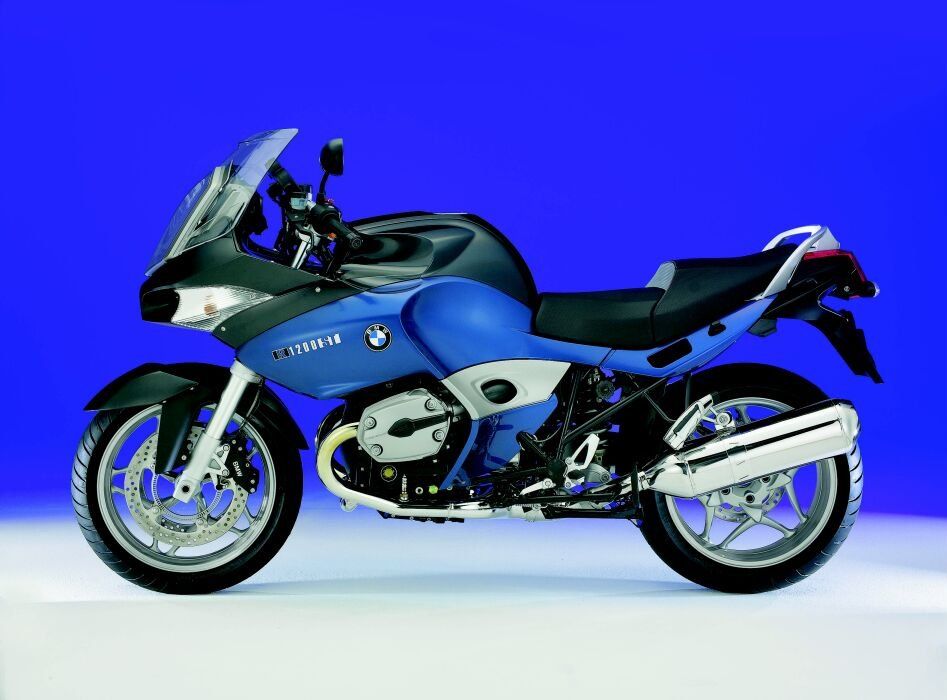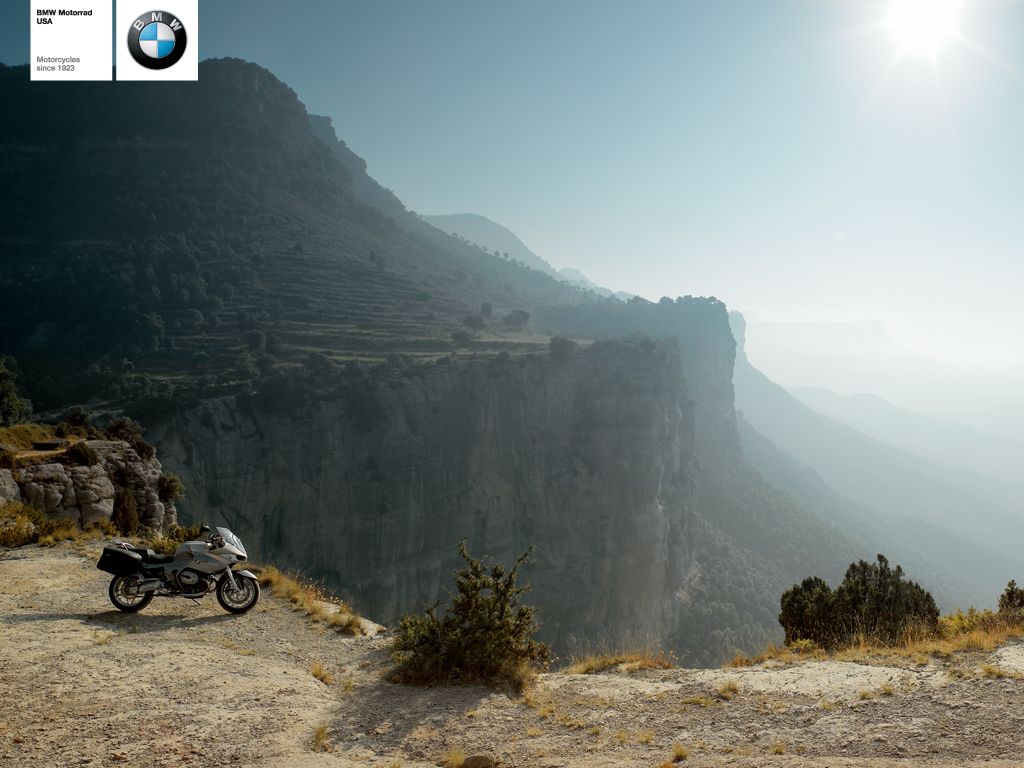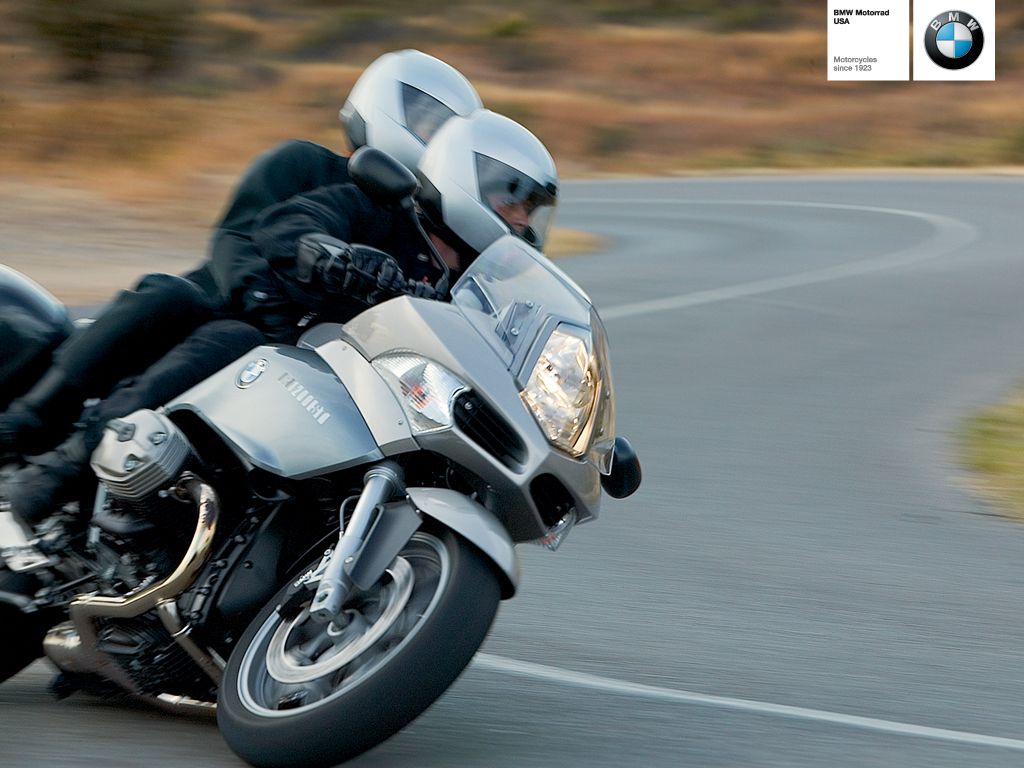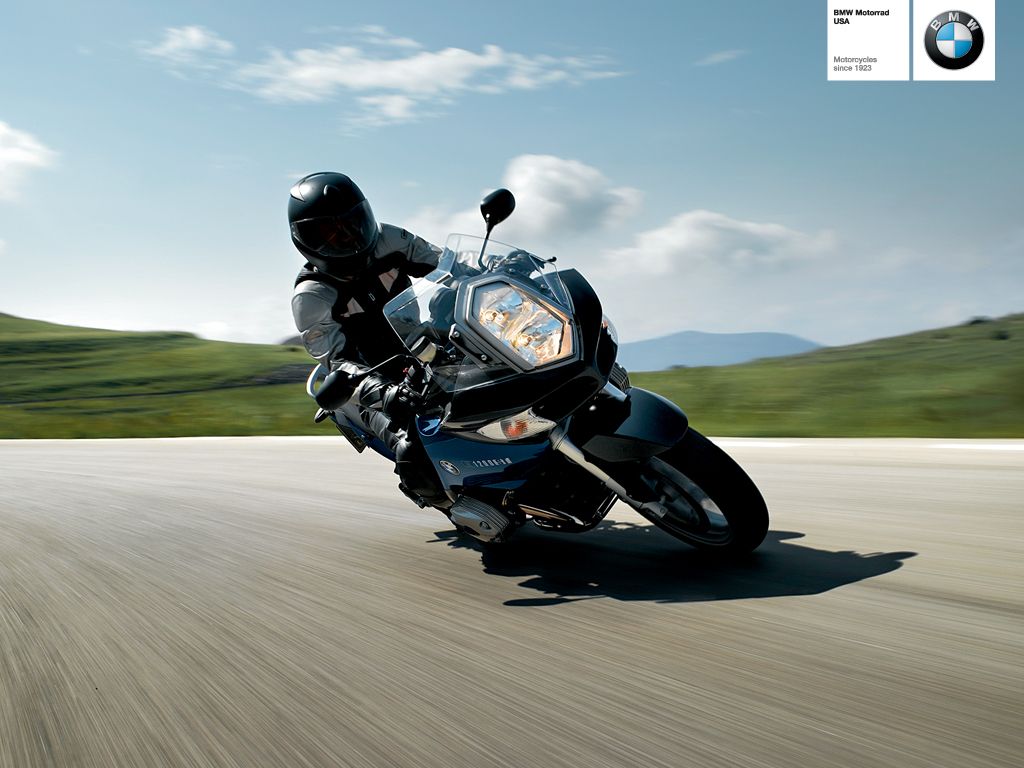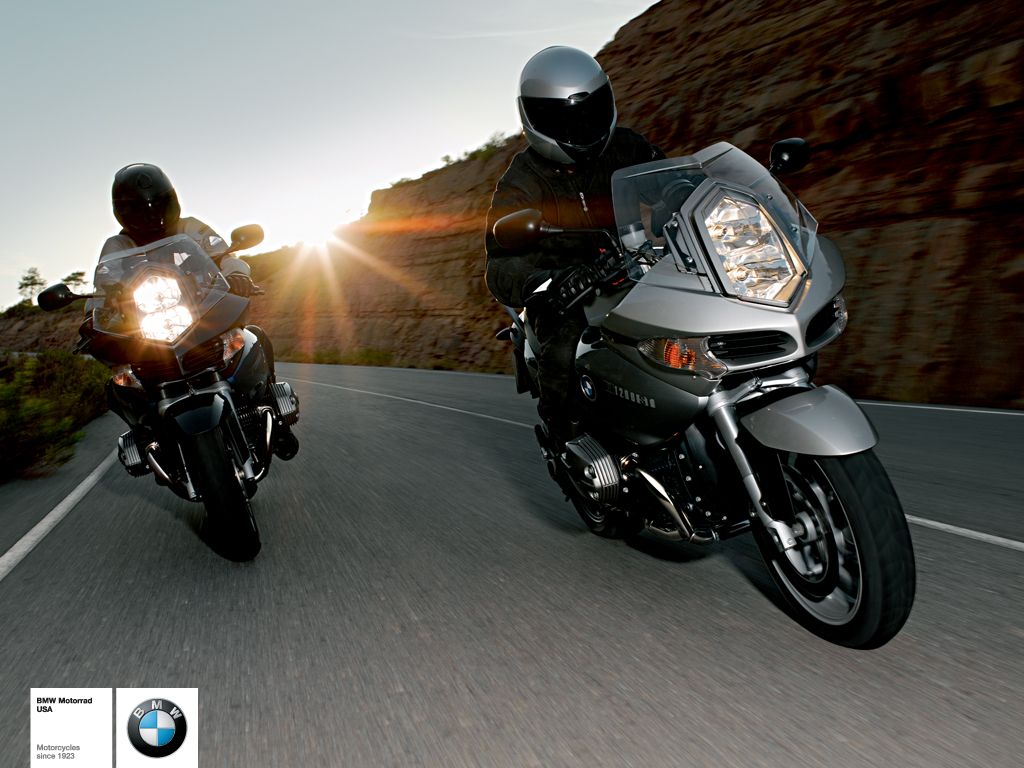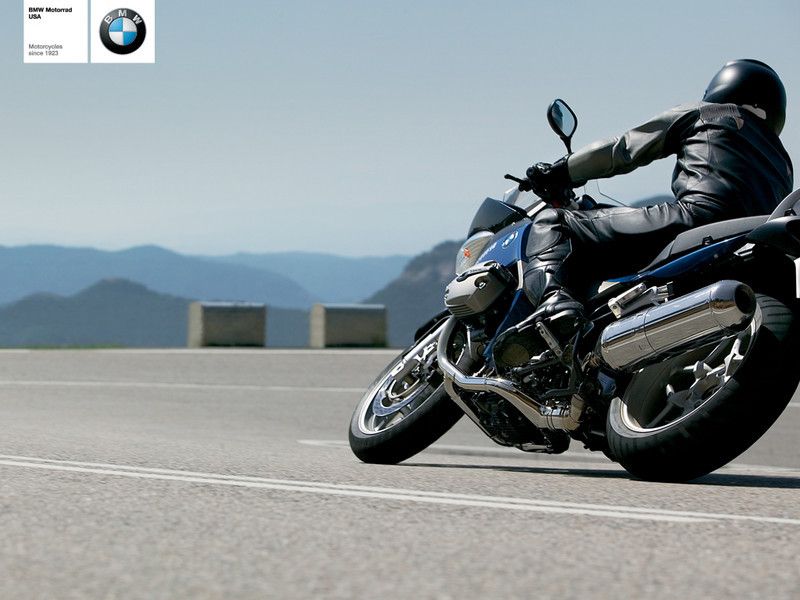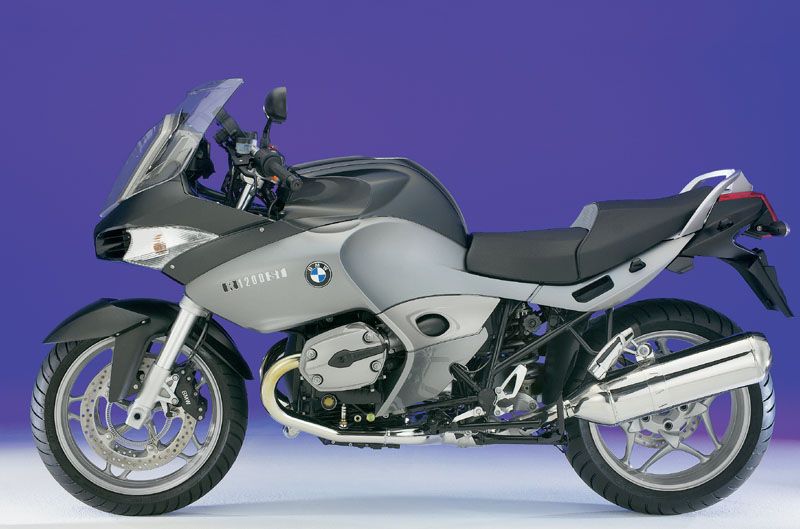Sport Touring is a class well known to BMW because, well…BMW just about invented it. And now, with the completely redesigned R 1200 RT and the new-think R 1200 ST, the concept has been even further refined. The R 1200 RT replaces the exceptionally versatile and popular R 1150 RT, while the R 1200 ST replaces the R 1150 RS, the last version of the legendary motorcycle that started the modern Boxer era in model year 1994.
2006 BMW R 1200 ST
- Make: Array
- Model: 2006 BMW R 1200 ST
- Horsepower: 110@7500
- Torque: 6000
2007 Ford Edge HySERIES Plug-In Hybrid
- Make: Array
- Model: 2007 Ford Edge HySERIES Plug-In Hybrid
- Horsepower: 110@7500
- Torque: 6000
- [do not use] Vehicle Model: Array
Both models use new engine and chassis technologies derived from the award-winning R 1200 GS. However, the new models are provided with improvements to suit them, ideally as ever, to the Sport Touring role. In much the same way as the R 1200 GS, both the R 1200 RT and the R 1200 ST have been designed for dramatically reduced weight compared to the preceding models as well as an impressive boost in maximum power from the all-new 1170cc, four-valve-per-cylinder Boxer twin.
Thanks to improvements in several areas, the new Boxer engine produces 110 hp, 15 hp more than the outgoing R 1150 RT’s -- and even 10 hp more than the R 1200 GS’s engine -- while retaining a broad, flat torque curve. Moreover, the R 1200 RT weighs an astounding 70 pounds less than the R 1150 RT, while the R 1200 ST undercuts the R 1150 RS by an amazing 55 pounds
This combination of lower weight and more power provides a substantial improvement in overall performance and handling. Just because a motorcycle is built to be comfortable for the long haul doesn’t mean it cannot also perform like a thoroughbred.
The R 1200 ST: emphasizing the "sport" in sport touring
Not every highway is flat, not every road is straight. That’s why BMW has created the
R 1200 ST, a successor to the famed R 1150 RS and a clear step sportier than the
R 1200 RT with which is shares its basic engine and chassis. Your first clue is the rakish bodywork, shaped by the wind and defiant of convention. Twin stacked headlights lead the way with a blast of useful illumination. The pointed lower fairing helps channel cooling air to the engine-oil cooler. Like the R 1150 RS before it, the R 1200 ST has a mechanically adjustable windscreen to tailor the amount of wind protection to the rider’s liking.
Behind the fairing, the rider fits into a comfortable and sporty position thanks to adjustable clip-on handlebars set into an ideal ergonomic stance. The sporty ergonomics, reminiscent of the R 1150 RS’s, offer maximum control and comfort for high-speed and long-distance touring. The alloy handlebars adjust vertically along a 1-inch (25mm) range and, together with the height-adjustable seat, offer up all the tools a rider needs to create a personalized comfort zone.
As with the R 1200 RT, the R 1200 ST includes a dual-position adjustable rider’s saddle – 31.9 or 32.7 inches (810 or 830mm) – with an optional lower saddle – 30.7 or 31.5 inches (780 or 800mm).
Instruments of effortless travel
New for the R 1200 RT and R 1200 ST are stylish and legible instrument clusters that include an Info Flatscreen rider-information display. This module includes information on oil temperature, fuel consumption and tank level, plus gear selection.
Power for one, power for all: sharing the new boxer
Both the R 1200 RT and the R 1200 ST take advantage of new technologies launched with the R 1200 GS last year. Beneath the dramatically reshaped cylinder heads lies an amazing new engine. Although it retains the classic Boxer opposed-cylinder architecture, virtually everything is new compared to the previous-generation 1130cc Boxer family. Maximum power for both the R 1200 RT and the R 1200 ST is 110 hp, up from 100 hp in the R 1200 GS and a massive 16-percent jump from the engine in the R 1150 series.
This newfound power starts at the advanced cylinder heads. Compared to the
R 1200 GS, the RT/ST engine employs a higher compression ratio – 12.0:1 compared to the GS’s 11.0:1 – and revised camshafts for greater thermal efficiency and increased airflow through the cylinder heads. The four valves retain their high-cam activation system, which uses a single, lightweight camshaft high in each cylinder head to operate the valves through short rocker arms fitted with easy-to-maintain screw-type lash adjusters. Taking a page from high-performance aircraft engines, BMW engineers selected sodium-filled exhaust valves for the R 1200 engine because they promote more efficient heat transfer. Two spark plugs per cylinder are again used, as on the R 1200 GS, resulting in fast, efficient burning of the fuel-air mixture in the combustion chamber.
In addition to those changes, the new RT/ST engine configuration features a 500-rpm-higher redline – now 7500 rpm – to take advantage of the engine’s increased high-rpm power. A revised intake system works with a new, larger exhaust system to further improve engine efficiency and power output. It says something about the basic new Boxer design that a group of comparatively minor changes can bring about a 10-percent increase without loss of low-end or midrange torque.
Otherwise, the RT/ST engine is similar to the R 1200 GS’s, using aluminum cylinders -- with treated bore for wear resistance without the weight of an iron or steel liner – to carry the same 101mm bore as the R 1150 engine. However, a 2.5mm-longer stroke (now 73mm) provides a total displacement of 1170cc with a desirably “oversquare” bore/stroke ratio to permit high engine speeds. Despite being larger, the new pistons are lighter than the R 1150’s. Under-piston oil jets -- a racing technology designed to remove heat from the piston and combustion chamber by spraying engine oil at the bottoms of the pistons -- are larger and flow more oil.
A new balncing act
Motorcyclists the world over marveled at the R 1200 GS’s impressive smoothness, the result of the first-ever use of a balance shaft in an opposed-twin motorcycle engine. Although the Boxer design has what’s known as perfect primary balance -- the major reciprocating forces are directly opposed because as one piston reaches the top of the stoke, the opposite piston does as well, canceling out the primary forces inherent in reciprocating designs -- there is some residual vibration caused from the connecting rods not being directly overlaid. In effect, the engine wants to oscillate around its center of mass, as viewed from above.
By employing a counterbalancing shaft, BMW has eliminated this kind of vibration, called rocking couple. As a result, the new engine is dramatically smoother, permitting not only elevated engine speeds with fewer stresses on components (including the rider) but it can be mounted to a lighter frame without sacrificing strength.
BMW’s engineers worked overtime to artfully locate the counterbalancer into an already efficiently packaged powerplant, and their solution is both inspired and effective. In the traditional R259 engine family, a gear-driven sub shaft is positioned below and parallel to the crankshaft plane that contains drive sprockets for the chain-driven camshafts as well as for the oil pump. In the new R 1200 RT/ST engine, this shaft is larger and houses, inside its inner diameter, a second shaft driven at crank speed -- the sub, or countershaft, is driven at one-half crank speed -- with one of the two necessary balancing weights integrated into the drive gear and the other bolted to the far end of the shaft outside of the oil bath to help reduce power loss. This design adds remarkably little weight, uses a minimum of engine power, makes the powerplant no larger yet dramatically improves rider comfort. And, just as important, the Boxer engine’s distinguishing opposed-twin rumble remains; this is a smooth yet charismatic engine.
-----
The brain is all powerfull
As on the R 1200 GS, the RT/ST engine employs the latest BMS-K engine management system. This is a completely integrated fuel- and spark-delivery system that uses sophisticated electronics fed crucial information by a host of sensors throughout the motorcycle. Anti-knock control allows the use of mid-grade fuel without risk of engine damage yet also maintains peak engine output when it is fed premium fuel. In this way, there are no compromises; the engine does not need to be “detuned” in the event premium fuel is not available. Moreover, these alterations are transparent to the rider.
The injection system is fully sequential, meaning that it squirts fuel into the intake manifolds precisely when needed for each cylinder. In addition, the intake system breathes through a large, efficient airbox. Moreover, the engine-control computer receives additional information from dual throttle-position sensors (as opposed to a single sensor before) and twin oxygen sensors located in the head pipes close to the cylinder for maximum accuracy and minimal lag time.
The RT/ST engine continues using BMW’s innovative Two Spark system, which has two spark plugs per cylinder. In previous Two Spark engines, the spark plugs were fired simultaneously, which still provides a faster, more efficient combustion event than is achievable with a single plug -- but in the new RT/ST these plugs can fire independently. By changing the relative ignition timing, called phase shift, further combustion efficiency can be gained, particularly at part throttle, where the engine can be made more powerful and more predictable.
Efficient fuel-injection and ignition systems make for a cleaner engine, and to complete the job, the R 1200 RT and R 1200 ST employ a fully controlled three-way catalytic converter in the stainless-steel exhaust system. Moreover, the RT/ST exhaust system employs a large, efficient muffler for minimum noise along with maximum possible power.
A revised transmission with "dynamic" sixth gear is standard, too
The R 1200 RT and R 1200 ST employ the all-new transmission that debuted on the
R 1200 GS. It’s fed by a large clutch (but still an efficient dry type that does not contaminate the engine or transmission oil) and a 1.823:1 primary reduction drive to reduce transmission-shaft speeds. This three-shaft arrangement allows stacking of the gear cluster well below the crankshaft centerline, to further reduce the engine’s already impressively low center of gravity. Still using six ratios, the new transmission employs helical-cut gears for quicker, smoother engagement and less noise.
The shift mechanism has been improved for reduced lever effort and more positive engagement. This six-speed transmission no longer employs the “wide ratio” scheme used before the R 1200 GS -- in which the top gear ratio was a large gap from fifth. The idea was to reduce highway vibration and fuel consumption but the smoother engine permits a shorter top-gear ratio, which improves responsiveness and passing performance. Improved bearings and other materials have extended the transmission’s oil-change interval to an amazing 25,000 miles.
The R 1200 RT and R 1200 ST pick up the R 1200 GS’s all-new Evo-Paralever shaft final drive – the only rational final-drive system for a Sport Touring motorcycle. It is an entirely forged-aluminum design (not cast) that’s considerably lighter and is sealed for life, meaning that you never need to change the gearcase lubricant. For ground clearance, the Paralever torque arm has been relocated to the top of the housing, while the large-diameter hollow axle improves resistance to twisting and reduces weight. Except for minor changes to accommodate a larger rear tire, it is the same unit as found on the R 1200 GS.
An all-new chassis, destined for the long haul
The R 1200 RT and R 1200 ST employ an entirely new chassis made up of round and square-section steel tube. (It is similar in concept to the R 1200 GS’s, but altered for the Sport Touring mission.) As BMW has since the beginning of the R259 series in 1993, the engine itself acts as a stressed member of the chassis, which helps reduce weight and parts count while improving rigidity. It’s worth mentioning that one of the prime advantages of an inherently smooth engine is that is can be solidly mounted and need not be mounted in rubber, which would preclude its use as a stressed member.
Up front, a revised Telelever arrangement bolts to a frame now made from steel tubes that is, thanks to careful engineering, actually lighter and stronger than the arrangement it replaces. The rear subframe features new mounts for the side- and centerstands as well as provisions for the swingarm pivot -- previously, the swingarm was mounted solely in the transmission cases.
Produced from high-strength forged aluminum, the R 1200 RT’s new Telelever A-arm is stronger and lighter than before. A combination of reworked Telelever parts and the new frame results in steering geometry that’s better suited to sporty riding. The trail has been reduced by 0.5 inches (13mm) while the steering-head angle has been reduced by 0.5 degrees. The wheelbase is the same at 58.5 inches (1485mm).
For the R 1200 ST, the chassis geometry is slightly altered from the RT’s, with 0.4-degree more steering-head angle and 0.7 inches (1.7mm) more trail. Also, at 59.1 inches (1502mm), the ST’s wheelbase is slightly longer than the RT’s.
Connected to the new Paralever single-sided swingarm is a new shock featuring travel-dependent damping called TDD. As on other BMW models, this shock’s compression damping increases dramatically near the upward limit of wheel stroke to help prevent bottoming out without compromising mid-stroke compliance. As before, the shock is adjustable for spring preload and rebound damping.
Optional on the R 1200 RT is BMW’s ESA – Electronic Suspension Adjustment. This system allows the rider to adjust the rear shock’s spring preload and damping qualities by a switch on the handlebar. Even while under way!
Impressive brakes
The R 1200 RT and R 1200 ST use BMW’s light and powerful EVO brake system. In addition, the R 1200 RT is standard equipped with Partial Integral ABS. This system is optional on the R 1200 ST. For Partial Integral ABS, the front brake lever activates the twin 320mm floating front discs through an electric power-assist mechanism and, as appropriate, the single 265mm rear disc. (The rear disc is 12mm smaller on the R 1200 ST than on the R 1150 RT for weight reduction.) Thanks to sophisticated electronics, the Partial Integral system actively determines the best front/rear braking ratios and applies them in real time, faster and more accurately than any rider could. The rear brake pedal operates only the rear brake.
Those brakes are fitted to new, lightweight cast-alloy wheels in more conventional sizes. The 3.5 x 17 front rim carries a 120/70 ZR-7 tire while the 5.5 x 17 rear rim holds a 180/55 ZR-17 tire. These sizes are the de facto standard among mainstream sporting and sport-touring bikes, which means there is a vast array of tire choices.
A simplified electrical system
The R 1200 RT and R 1200 ST use a technology that debuted on the R 1200 GS, called SWS, which is based on a CAN-bus network. CAN stands for Controller Area Network and denotes a computer-controlled electrical system that dramatically reduces the number of wires on the motorcycle. A pair of conventional copper wires makes up the connection from two controllers that manage everything from engine controls to the turnsignals. Moreover, the CAN system eliminates the need for conventional fuses. Should a part of the electrical system malfunction, CAN will remove power to it until the next time the vehicle is started. If the problem persists, a warning is flashed to the rider and an error code stored in the system for retrieval by BMW technicians. No more guesswork.
Options / accessories to take you the extra mile
A comprehensive list of BMW options and accessories are available for the R 1200 RT and R 1200 ST. These include:
- Partial Integral ABS (R 1200 ST; standard on the R 1200 RT)
- Reduced-height seat
- Anti-theft warning system
- BMW Navigator II GPS moving-map system
- Heated handgrips (R 1200 ST; standard on the R 1200 RT)
- Heated seat (R 1200 RT)
- Luggage rack (R 1200 ST; standard on R 1200 RT)
- Valve cover protectors
- BMW hard side cases (R 1200 ST; standard on R 1200 RT)
- BMW Topcase

